Previous: “Gerasa: The forgotten jewel of the Decapolis“
Note: This article combines archaeological and historical evidence spanning from Gerasa’s early development through the 2nd century AD to present a comprehensive picture of the city’s geographical setting.
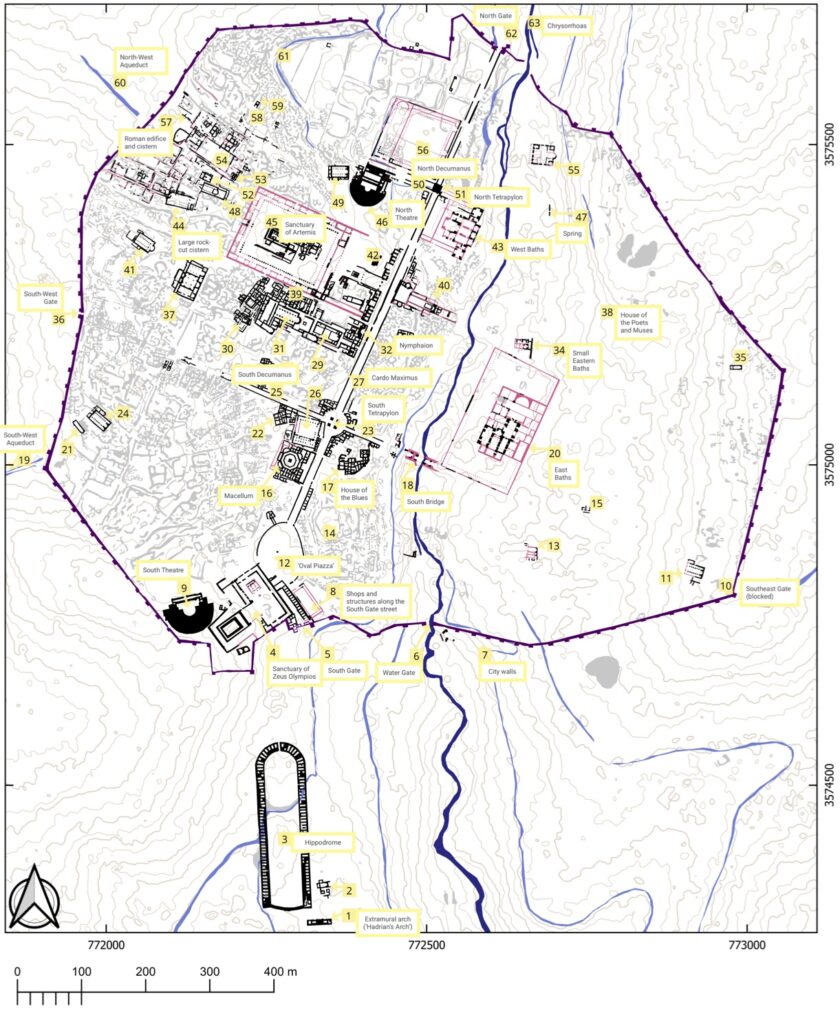
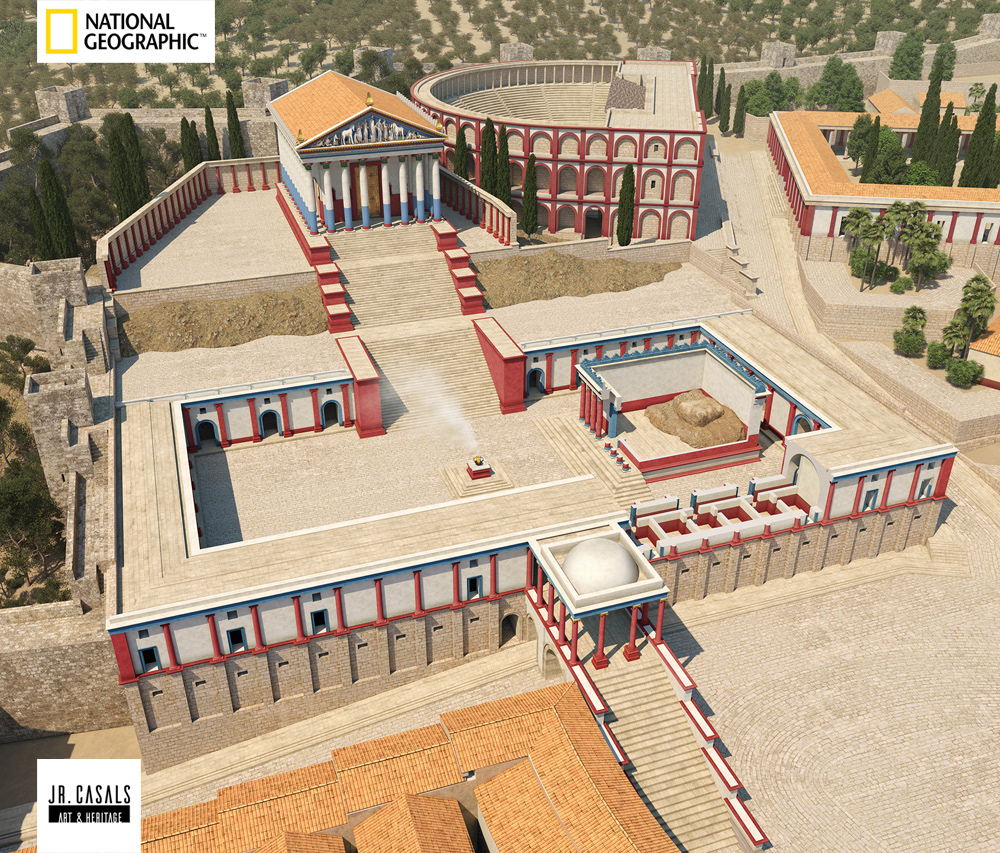
Approaching from the south, visitors first encounter the magnificent Temple of Zeus. The sanctuary sits atop an elevated platform, its wooden roof covered with distinctive red tiles. Inside, the statue of Zeus Olympios occupies a prominent niche. The interior walls feature an elegant contrast of white plaster divided by red limestone pilasters. Below the main sanctuary, a court surrounded by a barrel-vaulted gallery provides gathering space for worshippers with a small altar for burning incense at its center. The temple’s rear wall serves a dual purpose as part of the city’s fortifications.
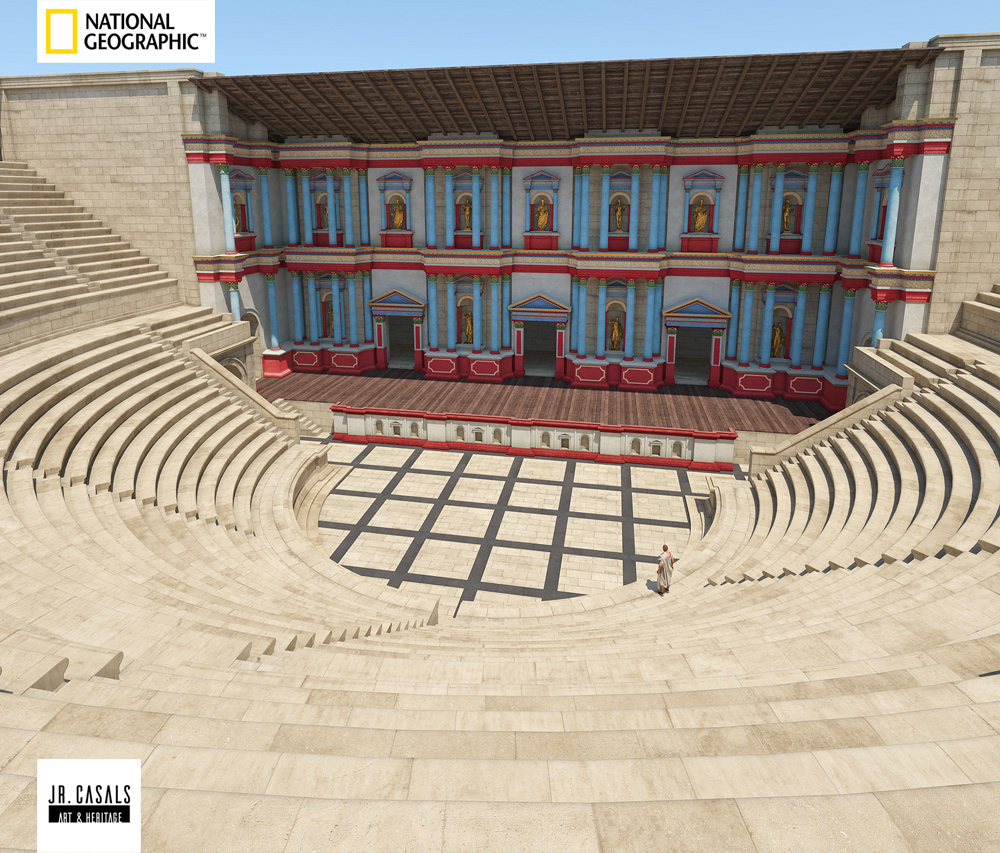
Adjacent to the Temple of Zeus stands the impressive South Theater, stretching 285 feet (86 meters) in length with 32 rows of numbered seats. The theater’s design cleverly incorporates multiple access points: a rear entrance between the theater back and city wall serves common citizens, while the Vomitoria (covered passageways) on either side provide access to the front seats and the orchestra area. The stage front features an alternating pattern of square and circular niches, while white Corinthian limestone columns contrast beautifully against red limestone walls. Statues once adorned the theater, including a Victory figure and a representation of Diana the huntress, positioned along decorative stairs leading to various seating levels.

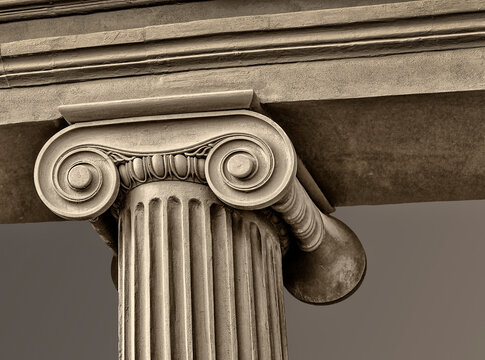
The Forum, shaped like a horseshoe, serves as the city’s commercial heart. Shops line its perimeter, sheltered by a colonnade of Ionic columns standing 32 feet 6 inches (10 meters) tall. A monumental triple gate connects the Forum to the city’s main road, the Cardo Maximus (south-north street).
Along this grand street, the architectural style shifts – the columns here feature Corinthian capitals mounted on pedestals. Covered walkways run continuously behind these columns on both sides, extending from the Forum to the north gate, interrupted only by crossing streets.
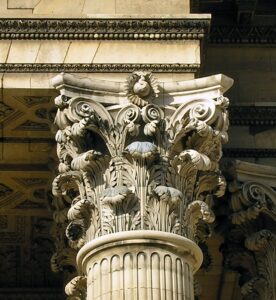
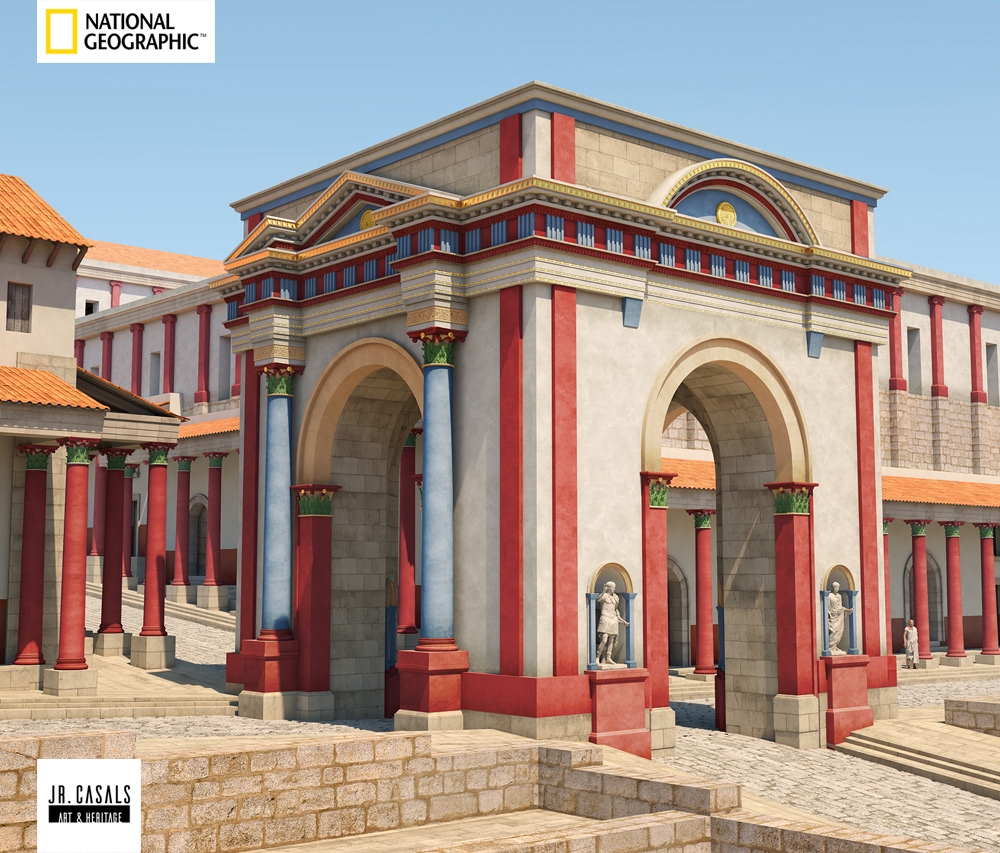
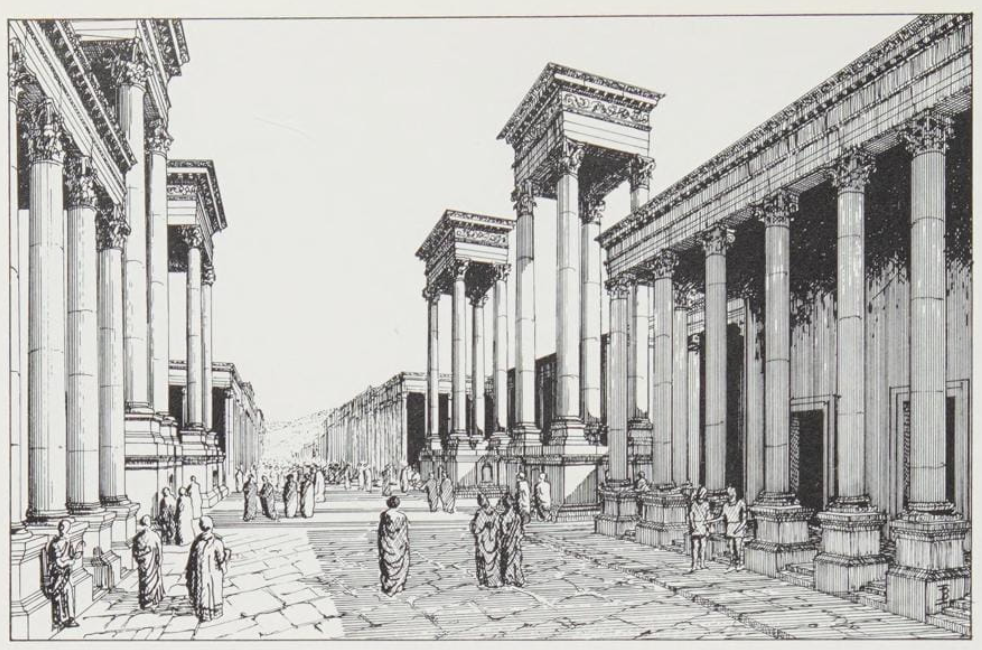
At the intersection of the Cardo Maximus and the South Decumanus (east-west street) stands an impressive Tetrapylon – a four-sided monument marking this important crossroads. Each face contains decorative niches, and the structure serves as a visual anchor for this bustling intersection. Descending east, the road continues down to the first bridge spanning the Chrysorroas river, beyond which stands the grand East Baths complex.

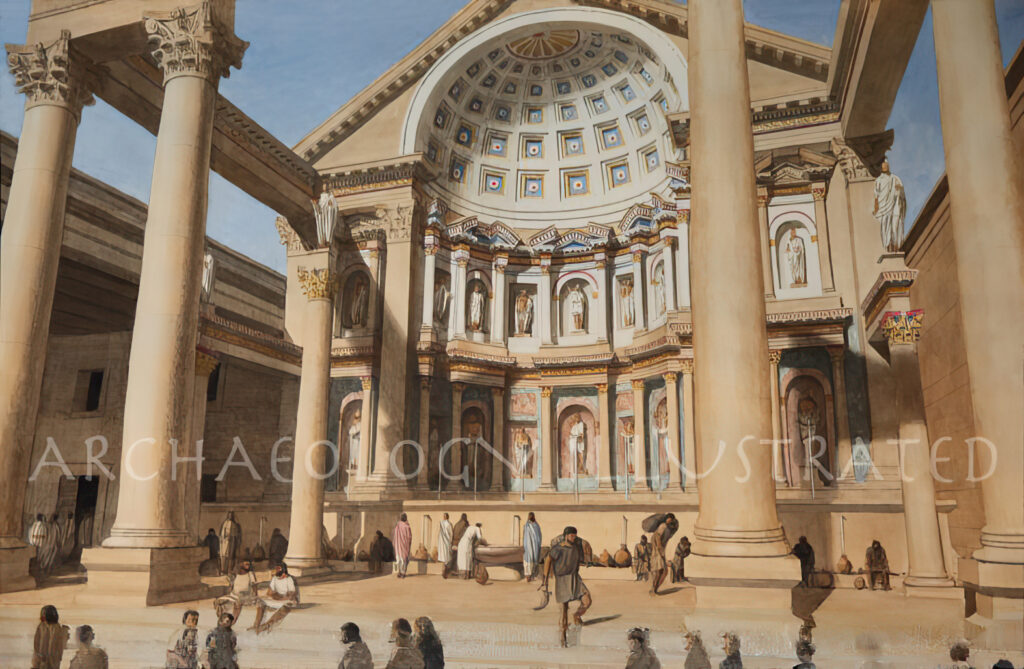
The Nymphaeum, constructed in 190 AD, stands as one of Gerasa’s most beautiful monuments. This semicircular public fountain combines practical function with artistic beauty, featuring alternating square and circular niches that cascade water into a central tank. The structure showcases a sophisticated combination of materials: marble facing, yellow limestone columns, and painted plaster decoration. Water flows through carved masks adorned with fish motifs before entering an elaborate drainage system. More than simply a water source, the Nymphaeum serves as a social gathering space where citizens find relief from the Mediterranean heat.
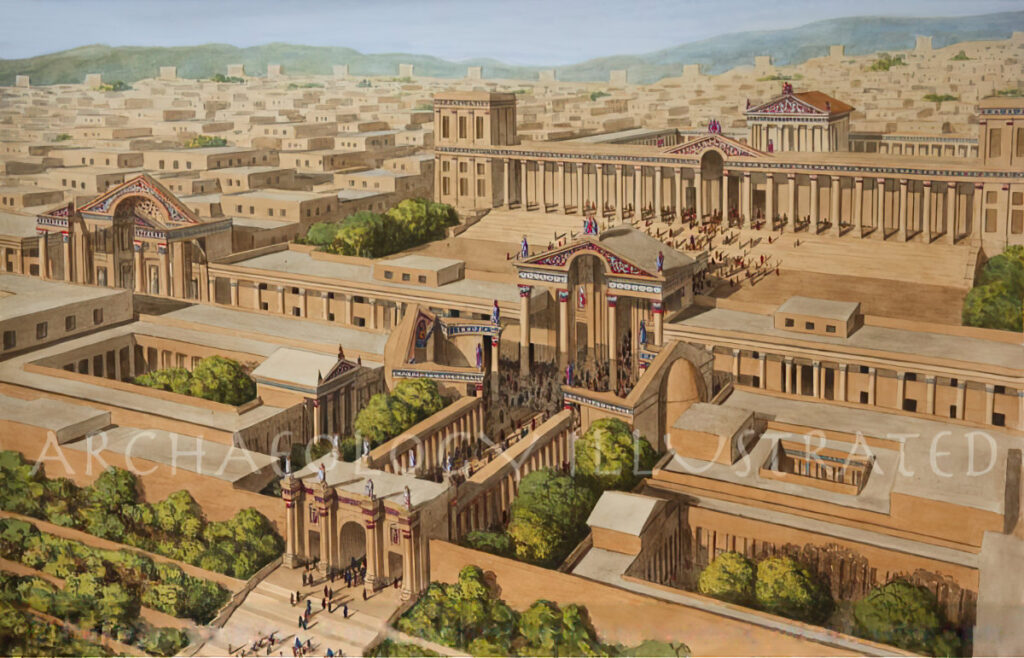
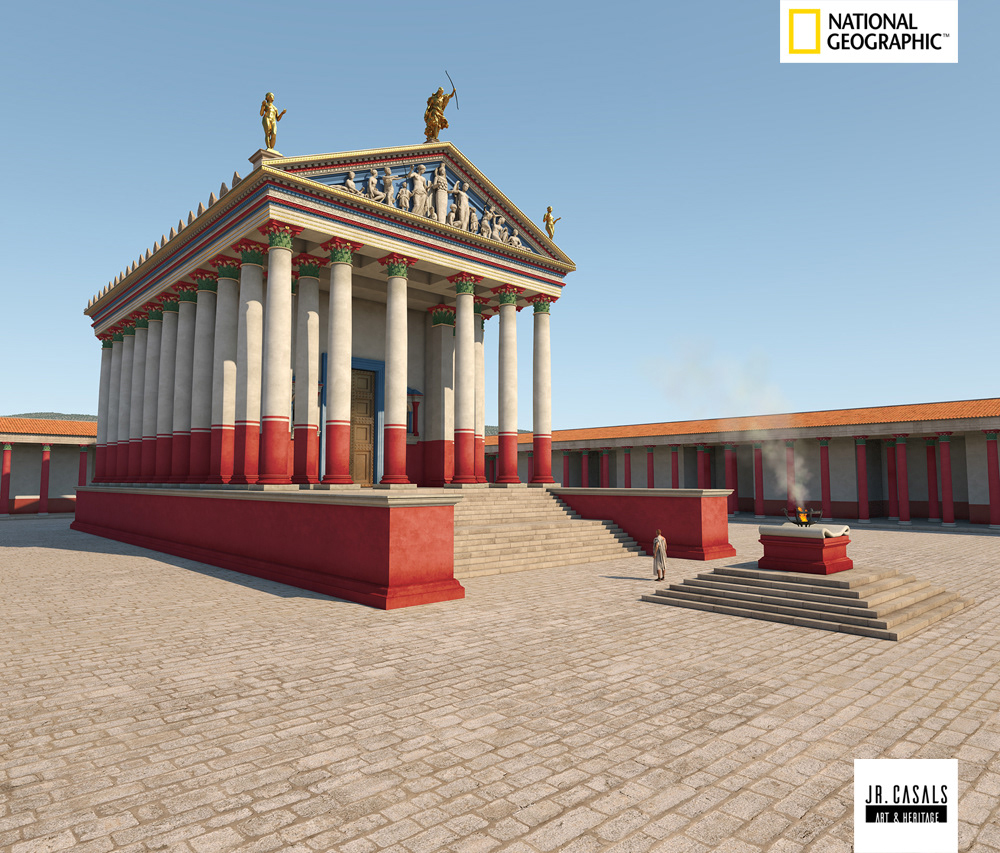
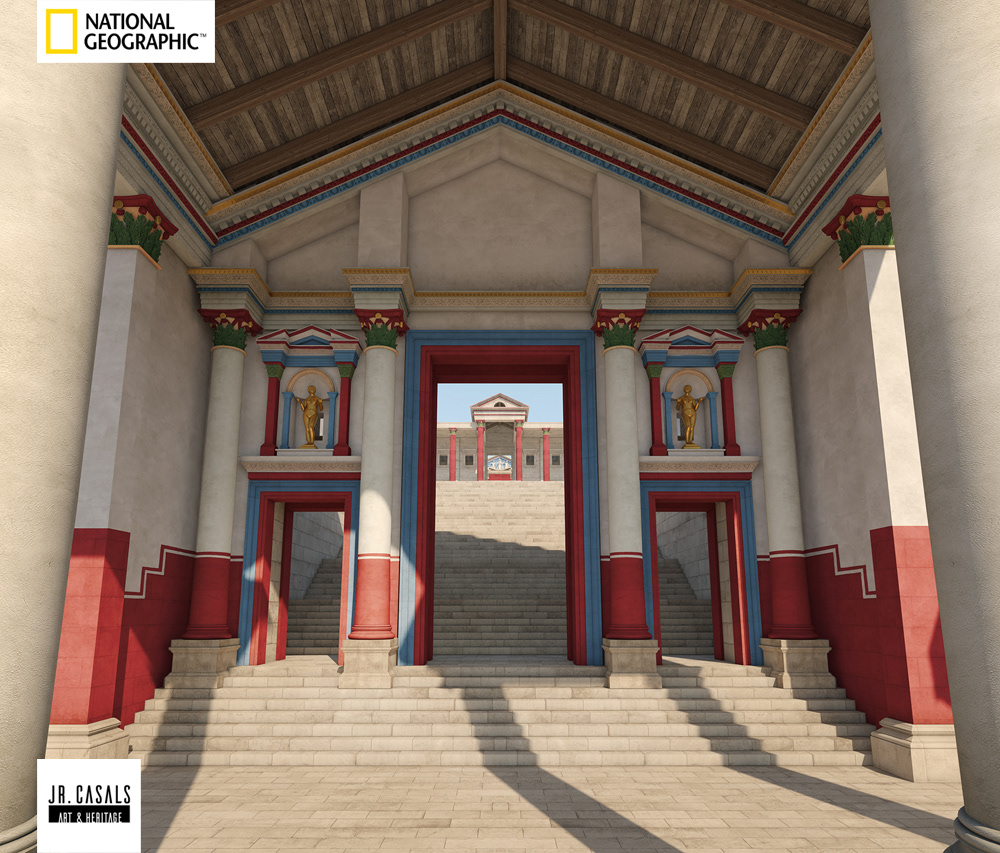
The Temple of Artemis complex commands the city from its strategic hillside position. Visitors enter through a monumental gateway with triple doors, ascending broad stairs to reach the outer court. This impressive entrance leads to a colonnaded corridor, beyond which lies the inner sanctum – a vast court surrounded by a pillared colonnade with the temple rising majestically at its center. The cella, elevated on a podium, houses the statue of Artemis, patroness of Gerasa. The goddess’s importance to the city is reflected in her appearance on local coinage.
The Cardo Maximus continues northward from the Temple of Artemis until it reaches the North Tetrapylon, where it intersects with the North Decumanus. From this crossroads, the eastern road leads to the West Baths, while the western path connects to the North Theater. The main street proceeds north to terminate at the North Gate, named after Emperor Trajan.
The Cardo Maximus continues north from the temple of Artemis until reaching North Tetrapylon, where it intersects with the North Decumanus. From this crossroad, the street on its right leads to the East Baths, while the left street runs to the North Theater through a portico. This latter section is a covered passageway with parallel rows of Ionic columns identical to the Tetrapylon followed by Corinthians columns connecting to the theater’s stage. The Cardo continues north until reaching the North city gate named after Emperor Trajan. Outside of the gate was a significant road dotted with tombs leading to the North.
The North Theater, though smaller than its southern counterpart, is ingeniously built into the hillside. It features tiered seating divided by decorative niches and can be accessed at two different levels through an interior semicircular gallery, resembling the design of the theater of Gadara (Umm Kais) . Side entrances connect to the stage area, while stairs on ascending planes at the theater’s edges allow movement between levels.
A deep valley divides Gerasa into eastern and western halves, with the Chrysorroas river flowing through its center, contained by impressive retaining walls. While only two bridges – the southern bridge and the viaduct – are confirmed to have connected the city’s halves, the presence of the North Tetrapylon suggests there may have been a third crossing point, though no archaeological evidence has yet confirmed this theory.
The city’s water supply system deserves special mention. Water was brought in from springs located two kilometers above the city, as well as from sources within the walls. The valley was known as “Chrysorroas” – the stream of gold – either referring to the wealth it brought through agriculture or its appearance during harvest season. Below the city, the river valley supports lush gardens planted with fruit trees, walnuts, and poplars.
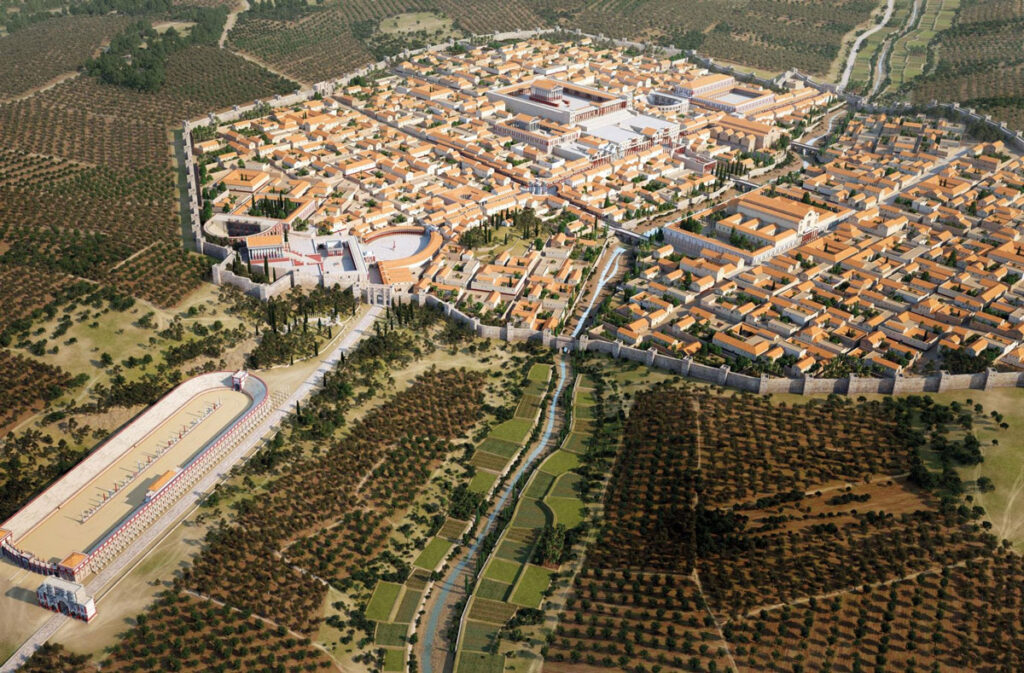
Disclaimer:
All images used on this article are the property of their respective owners. I do not claim ownership of any images and provide proper attribution and links to the original sources when applicable. If you are the owner of an image, please contact us so I can add your information or remove it if you wish.
Sources:
- “Official Guide to Jerash” with plan by Gerald Lankester
- “The Chora of Gerasa Jerash” by Achim Lichtenberger and Rubina Raja
- “Jarash Hinterland Survey” by David Kennedy and Fiona Baker
- “Antioch on the Chrysorrhoas Formerly Called Gerasa” by Achim Lichtenberger and Rubina Raja
- “Jarash Hinterland Survey — 2005 and 2008” by David Kennedy and Fiona Baker
- “A new inscribed amulet from Gerasa (Jerash)” by Richard L. Gordon, Achim Lichtenberger and Rubina Raja
- “Apollo and Artemis in the Decapolis” by Asher Ovadiah and Sonia Mucznik
- “Onomastique et présence Romaine à Gerasa” by Pierre-Louis Gatier
- “Dédicaces de statues “porte-flambeaux” (δαιδοῦχοι) à Gerasa (Jerash, Jordanie)” by Sandrine Agusta-Boularot and Jacques Seigne
- “Un exceptionnel document d’architecture à Gérasa (Jérash, Jordanie)” by Pierre-Louis Gatier and Jacques Seigne
- “Zeus in the Decapolis” by Asher Ovadiah and Sonia Mucznik
- “The Great Eastern Baths at Gerasa Jarash” by Thomas Lepaon and Thomas Maria Weber-Karyotakis
- “Architectural Elements Wall Paintings and Mosaics” by Achim Lichtenberger
- “Glass Lamps and Jerash Bowls” by Rubina Raja
- “Water Management in Gerasa and its Hinterland” by David D. Boyer
- “Hellenistic and Roman Gerasa” by Rubina Raja
Leave a Reply
You must be logged in to post a comment.